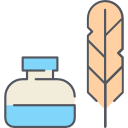Ditapis dengan

Plant resources of south-east asia timber trees: Minor commercial timbers
for enrichment planting in natural forest are also indicated. The timbers dealt with include amberoi, dao, durian, ebony, jeluong, kedondong, kelat, medang, mempening, penaga, podocarp, rengas, rubberwood, simpoh, surian, tembesu and wattle. A glossary is included to explain the terms used.
- Edisi
- No 5 (2)
- ISBN/ISSN
- 9073348447
- Deskripsi Fisik
- 655 hlm.: ilus.; 27 cm.
- Judul Seri
- -
- No. Panggil
- 333.75 LEM p

Plant resources of South-East Asia Timber trees: Lesser-known timbers
This volume on lesser-known timbers complete the Prosea trilogy on timber trees. Lesser-known timbers merit attention because of the growing appreciation of their importance in the sustainable management of tropical forest and of their potential for forest plantations. The increasing use of wood-based panels, requiring less outstanding timber qualities and less uniformity, also intensifies thei…
- Edisi
- No 5 (3)
- ISBN/ISSN
- 9073348889
- Deskripsi Fisik
- 859 hlm.: ilus.; index; 27 cm.
- Judul Seri
- -
- No. Panggil
- 333.75 SOS p

Plant resources of South-East Asia Cryptogams: Algae
This volume deals with the algae that are used in some form in South-East Asia. Their utilization falls mainly into four main categories: direct human consumption (vegetables, salads, health food), production of phycocolloids, raw material for animal feed and fertilizer, and medicinal and pharmaceutical uses. Small and unicellular algae (microalgae) are used differently from the larger ones (ma…
- Edisi
- No 15 (1)
- ISBN/ISSN
- 905782096X
- Deskripsi Fisik
- 318 hlm.: ilus.; index; 27 cm.
- Judul Seri
- -
- No. Panggil
- 333.9538 REI p

An introduction to plant breeding
- Edisi
- -
- ISBN/ISSN
- 978-1-4051-3344-9
- Deskripsi Fisik
- viii, 209 hlm.: ilus.; 25 cm.
- Judul Seri
- -
- No. Panggil
- 631.52 JAC a
- Edisi
- -
- ISBN/ISSN
- 978-1-4051-3344-9
- Deskripsi Fisik
- viii, 209 hlm.: ilus.; 25 cm.
- Judul Seri
- -
- No. Panggil
- 631.52 JAC a

Plant biotechnology: the genetic manipulation of plant
- Edisi
- Second
- ISBN/ISSN
- 978-0-19-9282-61-6
- Deskripsi Fisik
- xxiii, 376 hlm.: 25 cm.
- Judul Seri
- -
- No. Panggil
- 631.523 ADR p
- Edisi
- Second
- ISBN/ISSN
- 978-0-19-9282-61-6
- Deskripsi Fisik
- xxiii, 376 hlm.: 25 cm.
- Judul Seri
- -
- No. Panggil
- 631.523 ADR p

Induced mutations in plant breeding
- Edisi
- -
- ISBN/ISSN
- 978-3-642-81999-5
- Deskripsi Fisik
- x, 238 hlm.: ilus.; 24 cm.
- Judul Seri
- -
- No. Panggil
- 631.5 GOT i
- Edisi
- -
- ISBN/ISSN
- 978-3-642-81999-5
- Deskripsi Fisik
- x, 238 hlm.: ilus.; 24 cm.
- Judul Seri
- -
- No. Panggil
- 631.5 GOT i

Tradition plant usage in four villages of Bali Aga: Tenganan, Sepang, Tigawas…
- Edisi
- -
- ISBN/ISSN
- 979-8539-28-1
- Deskripsi Fisik
- v, 87 hlm.: ilus.; 24 cm.
- Judul Seri
- -
- No. Panggil
- 630 ING t
- Edisi
- -
- ISBN/ISSN
- 979-8539-28-1
- Deskripsi Fisik
- v, 87 hlm.: ilus.; 24 cm.
- Judul Seri
- -
- No. Panggil
- 630 ING t
 Karya Umum
Karya Umum  Filsafat
Filsafat  Agama
Agama  Ilmu-ilmu Sosial
Ilmu-ilmu Sosial  Bahasa
Bahasa  Ilmu-ilmu Murni
Ilmu-ilmu Murni  Ilmu-ilmu Terapan
Ilmu-ilmu Terapan  Kesenian, Hiburan, dan Olahraga
Kesenian, Hiburan, dan Olahraga  Kesusastraan
Kesusastraan  Geografi dan Sejarah
Geografi dan Sejarah